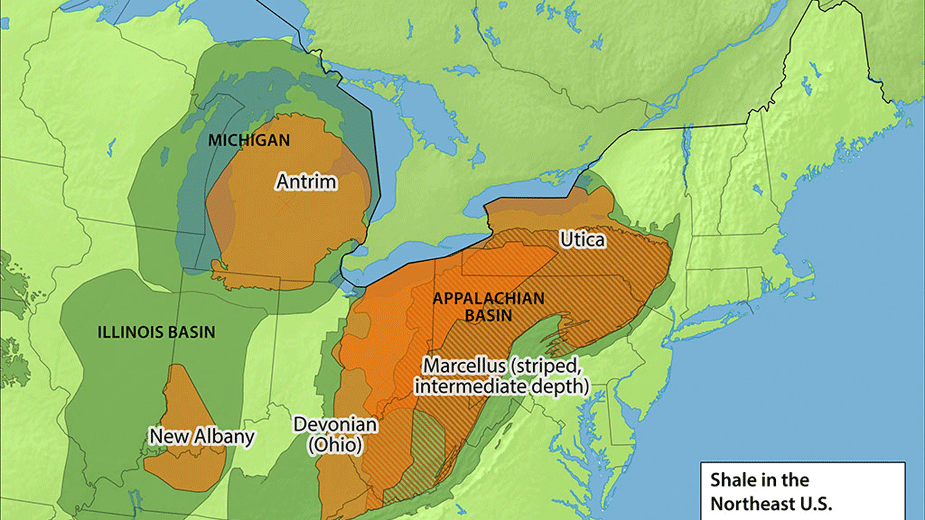Shale Crescent Seeks Petrochemical Investment in Appalachian Basin
YOUNGSTOWN, Ohio – Investors who elect to spend billions of dollars to construct new petrochemical plants in eastern Ohio, western Pennsylvania, and West Virginia stand to see a better return than building new facilities on the Gulf Coast.
That’s the conclusion of a new study commissioned by Shale Crescent USA, a nonprofit organization that is pushing for additional investment and development in ethylene and polyethylene plants across the region.
“There’s clearly an advantage,” said Wally Kandel, senior vice president of Solvay and member of Crescent Shale USA. “For 75 years, the right place to build has been on the Gulf Coast. We’re questioning that paradigm.”
Kandel and Shale Crescent USA spokesman Jerry James, along with Ron Whitfield of IHS Markit, addressed reporters on a conference call Tuesday morning while attending the World Petrochemical Conference in Houston.
IHS Markit compiled the report at the request of Shale Crescent, which first presented its case for additional petrochemical investment to executives and CEOs attending last year’s conference, Kandel says he was often asked about raw data regarding the economics and logistics of the market, the impetus for the study.
The study finds that the Appalachian region – dubbed the “Shale Crescent” — presents a compelling economic argument to build and maintain several ethylene “cracker” plants, whereas in the Gulf Coast similar plants would see far less return.
That’s because the Appalachian region sits atop of one of the largest reservoirs of natural gas in the world – the Marcellus and Utica shale plays, enabling access to a low-cost feedstock of ethane gas to supply these plants.
“The Shale Crescent is more profitable than the Gulf Coast, and it’s driven by feedstock costs,” Whitfield said. On average, tapping into ethane feedstock from the Utica or Marcellus shale would cost 32% less if used in Appalachia than along the Gulf Coast, he said.
Cracker plants take ethane gas and process it into ethylene and polyethylene – materials that form the basic ingredients of plastics and countless products. By 2040, IHS Markit estimates the region will produce 37% of the nation’s natural gas supply.
Moreover, the cash cost of ethylene is 23% lower on average when using an Appalachian business model as compared to the Gulf Coast, and transportation costs are lower, Whitfield said.
“Two-thirds of ethylene demand is within a single day’s drive,” Kandel said, noting Ohio alone boasts 900 companies that convert polyethylene into products.
Over a 20-year period, an ethane cracker operation in Appalachia could realize at least a $713 million greater return compared to a similar size plant built along the Gulf Coast, Whitfield said. Undiscounted returns could top $3 billion, he noted.
So, if Appalachia is such a great location for a cracker plant, why haven’t petrochemical companies flocked to the region yet?
Aside from Royal Dutch Shell’s $6 billion cracker complex – now under construction near Monaca, Pa. on the Ohio River — and PTT Global’s interest in potentially constructing a second cracker plant in Belmont County, Ohio, there hasn’t been much interest from big players such as Dow or Exxon Mobil.
Some point to the lack of underground liquid gas storage facilities and proper infrastructure in the area, which are essential in building a robust petrochemical sector.
However, companies such as Mountaineer NGL Storage have made progress in moving forward with such projects, Shale Crescent’s James said, adding it’s still very early in the process and developing a cracker project often takes years.
Furthermore, it’s likely the first real investors would be those that don’t already have strong ties to the Gulf Coast – mostly foreign companies who are moving into the North American market for the first time. “The main investors early on will be foreign investors, since they don’t have Gulf Coast assets,” Whitfield said.
Others might want to see how Shell’s cracker develops before committing large dollars to an as yet unproved region for the petrochemicals market.
“When you have change, it sometimes takes 10 to 20 years to accommodate this change,” Shale Crescent’s James said, underscoring how quickly shale development has reshaped the economic landscape of the region.
Twenty years ago, Ohio, Pennsylvania and West Virginia supplied just 3% of the country’s natural gas, James said. “At the end of last year, it was 30% and in 20 years from now, the forecast is 37%,” he said. “This is an unassailable location.”
Graphic Source: Penn State University Marcellus Center for Outreach and Research
Copyright 2024 The Business Journal, Youngstown, Ohio.



